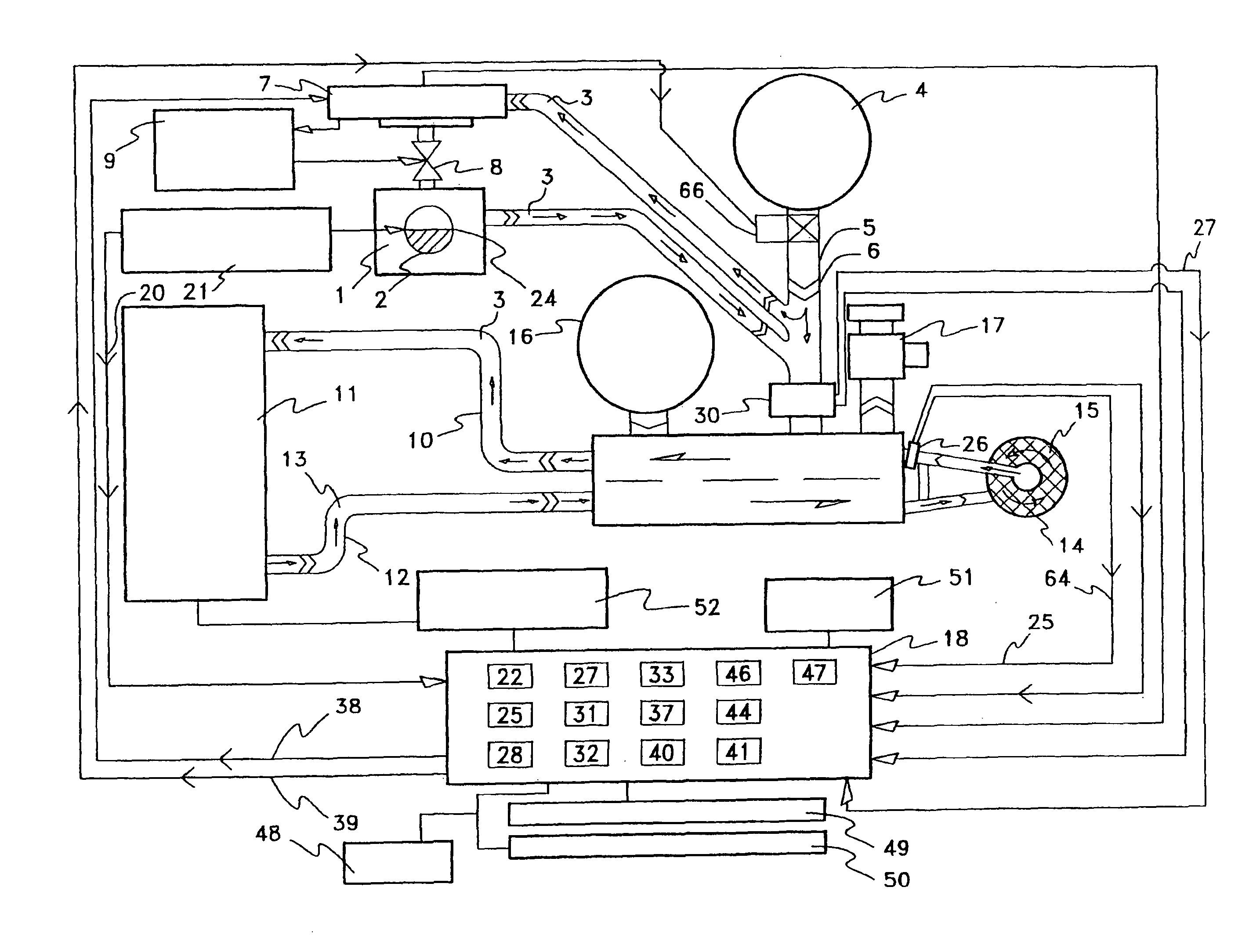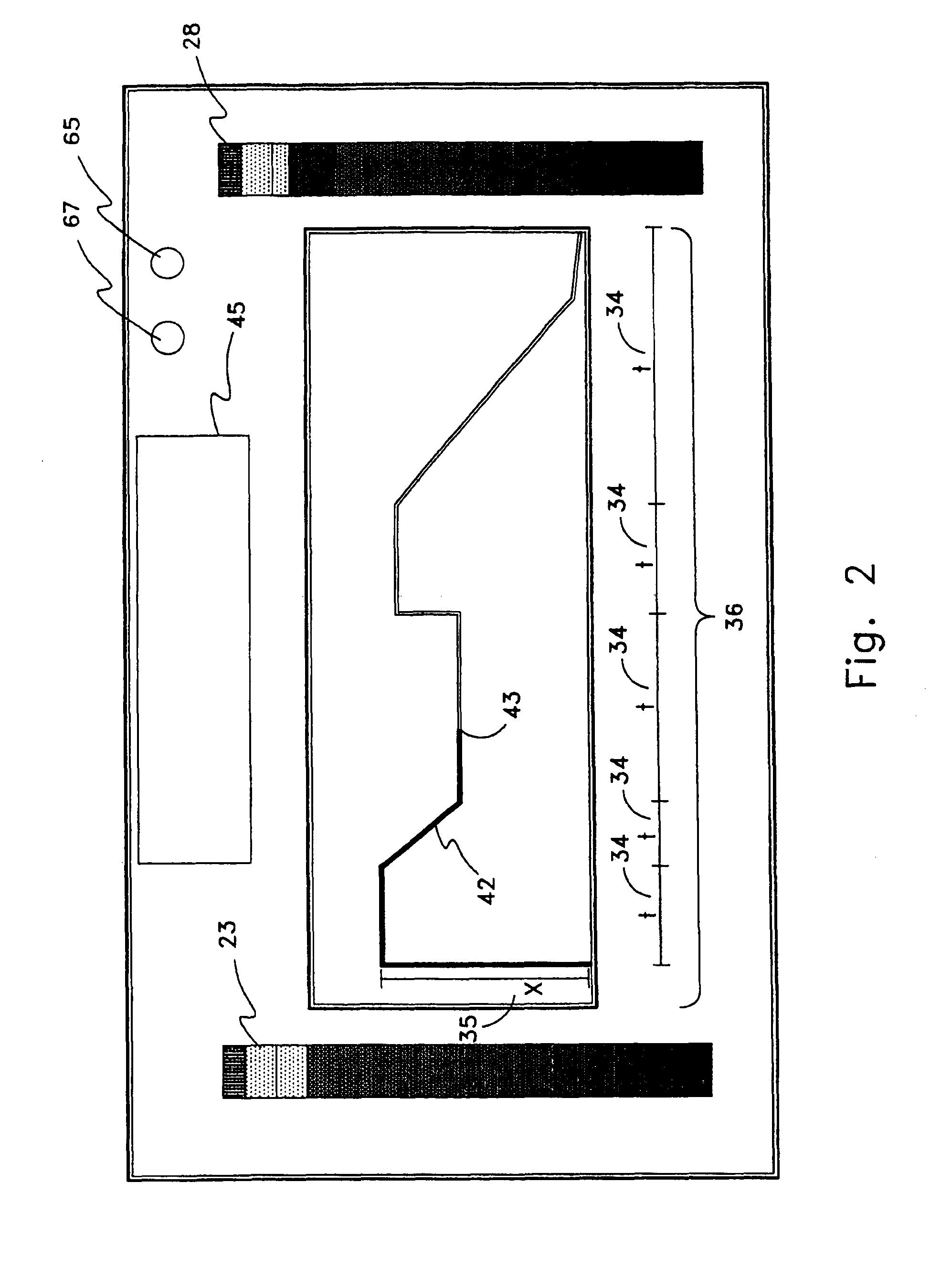Veterinary anesthesia monitor system
a monitor system and anesthesia technology, applied in the direction of valve operating means/release devices, process and machine control, instruments, etc., can solve the problems of not yielding the proper partial pressure of the inhalant anesthetic delivered to the patient, the anesthesia vaporizer may not be properly adjusted, and the oxygen delivered from the anesthesia machine can be contaminated with inhalation anesthetic,
- Summary
- Abstract
- Description
- Claims
- Application Information
AI Technical Summary
Benefits of technology
Problems solved by technology
Method used
Image
Examples
Embodiment Construction
[0032]In general, an anesthesia device which monitors the amount of anesthetic held for vaporization and characteristics of the mixture of gases in the circular re-breathing system. Specifically, a veterinary anesthesia device which can monitor the amount of anesthetic held in the vaporizer and which can monitor the amount of anesthetic and amount of carbon dioxide in the circular re-breathing system.
[0033]First referring primarily to FIG. 1, an embodiment of the anesthesia device in accordance with the invention provides an anesthetic source (1) in which an amount of anesthetic (2) is established. The anesthetic source (1) entrains an amount of anesthetic (2), such as, Halothane, Enflurane, Isoflurane, Desflurane, Sevflurane, or the like, in a flow of gases (3). The flow of gases (3) can be gas flow generator (4) which without limitation can comprise a compressed gas cylinder coupled to a gas pressure regulator (5) and a gas flow meter (6). The gas flow generator can establish a fl...
PUM
 Login to View More
Login to View More Abstract
Description
Claims
Application Information
 Login to View More
Login to View More - R&D
- Intellectual Property
- Life Sciences
- Materials
- Tech Scout
- Unparalleled Data Quality
- Higher Quality Content
- 60% Fewer Hallucinations
Browse by: Latest US Patents, China's latest patents, Technical Efficacy Thesaurus, Application Domain, Technology Topic, Popular Technical Reports.
© 2025 PatSnap. All rights reserved.Legal|Privacy policy|Modern Slavery Act Transparency Statement|Sitemap|About US| Contact US: help@patsnap.com



